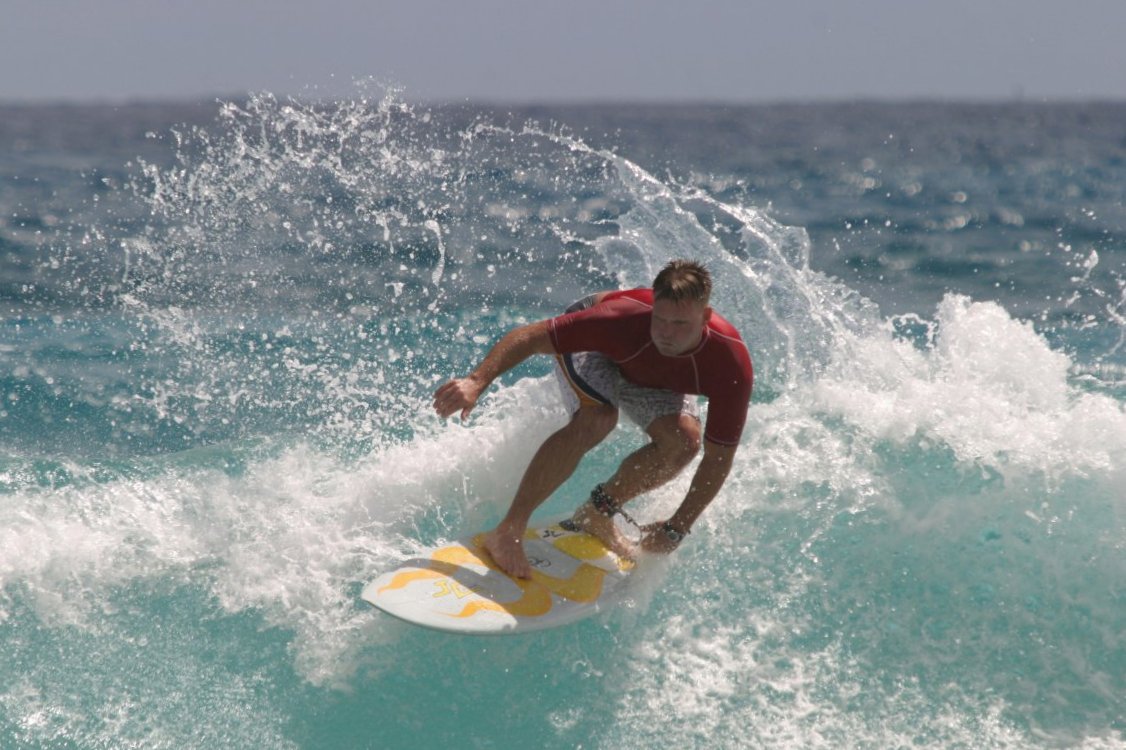We already taught you the basics of surfing, which means now we can jump right in to the history of it. No one knows for sure how the idea of surfing came about; it could have very well been by accident. But by the eighteenth century, Hawaiians mastered the ocean activity, impressing European explorers and other early visitors. They weren’t the only ones enjoying the Pacific’s waves, though; records showed other cultures in the Pacific surfed, as well as people in West Africa and Peru.
However, surfing in Hawaii differed greatly from the other places. All Hawaiians – men, women and children, from all social classes – surfed. Out in the western Pacific, mainly young boys surfed, and when it came to surfboards, the Hawaiian ones surpassed others in design and materials. Boards from other cultures included palm frond stems or bundles of reeds, which weren’t as stable in the ocean.
Hawaiian Surf Legends
One of my favorite stories talks about a break that’s several miles from Waikiki – where Honolulu Harbor is today – called Kekai o Mamala (The Sea of Mamala). It was named after Mamala, a famous surfer and Oahu chiefess that also took the form of a gigantic lizard or a great shark. She married a fellow shark-person, Ouha, but eventually left him for another man. Angered and ashamed, Ouha cast off his human form and became the great shark god between Waikiki and Koko Head. The beautiful Mamala was remembered through a mele exposing the triangular love affair.
The hundreds of writings on surfing revealed another aspect of the ancient sport’s importance: vocabulary. Most of the words below are still used today and probably represents only a portion of the full surf glossary.
hee: to slide; to surf
hee nalu: to ride a surfboard; surfing; literally wave-sliding
nalu: a wave; surf
The rich vocabulary and expansive surf spots help one to understand why early Europeans described surfing as a “national pastime.” The alii (chiefs and chiefesses) had a reputation of being some of the top surfers in Hawaii. They often had a personal surf chant that proclaimed their glory and skills. A chanter delivered the message each time the alii surfed. Male alii would show off their skills or court visiting chiefesses with their skills during surf competitions.
Religion and Surfing
Although surfing wasn’t a religious practice, it integrally involved the various gods and spirits. Entire communities would put aside their chores to enjoy a day of surfing games during the Makahiki celebration, while alii asked kahuna (priests) to pray for big waves before a competition. They didn’t pray to any specific surf god, but went to a heiau (temple) specific to surfing. A few of these heiau still exist today on the Big Island. They were usually near a surf break with a huge bleacher area facing the waves. Both heiau have what used to be a freshwater pool, probably for surfers to cleanse in after a long surf session in the salty ocean.
The Ebbing Surf Trend
Hawaiians shared surfing with other parts of the world, as one of the few Hawaiian cultural features to travel overseas. But during the late 1800s, surfing (as well as other native pastimes) slowly started to die as more alien explorers and missionaries came to the Islands. It was not until this century that Hawaii saw a renaissance in surfing, with increased technology and accessibility. Hawaiians, like Duke Paoa Kahanamoku, shared the spirit of surfing worldwide. Today, people of all ages, genders and skill-level flood Hawaiian waters with the same goal in mind: hee nalu!
Source: Finney, Ben and Houston, James. Surfing: A history of the Ancient Hawaiian Sport. San Francisco: Pomegranate Artbooks, 1996.




